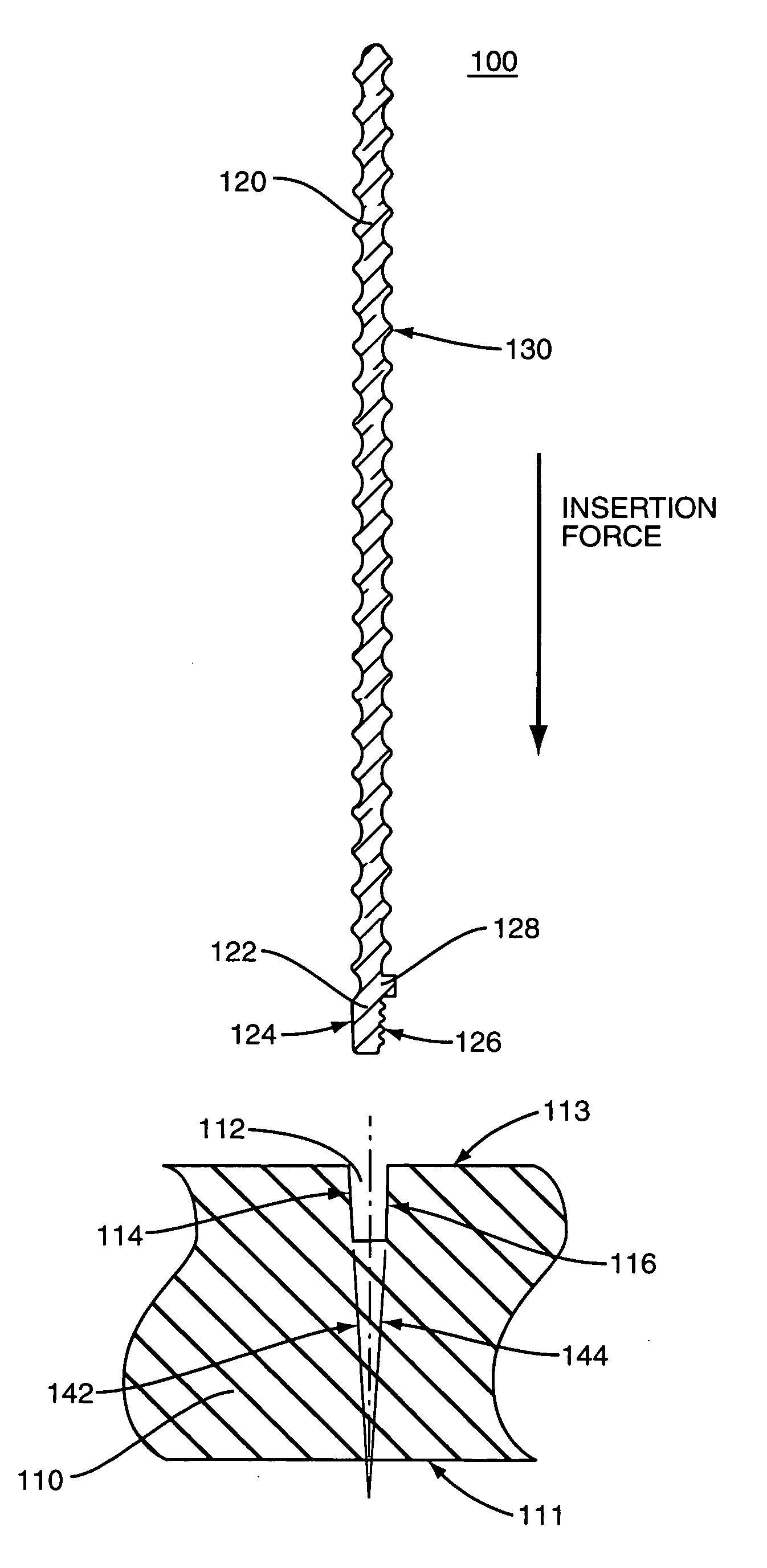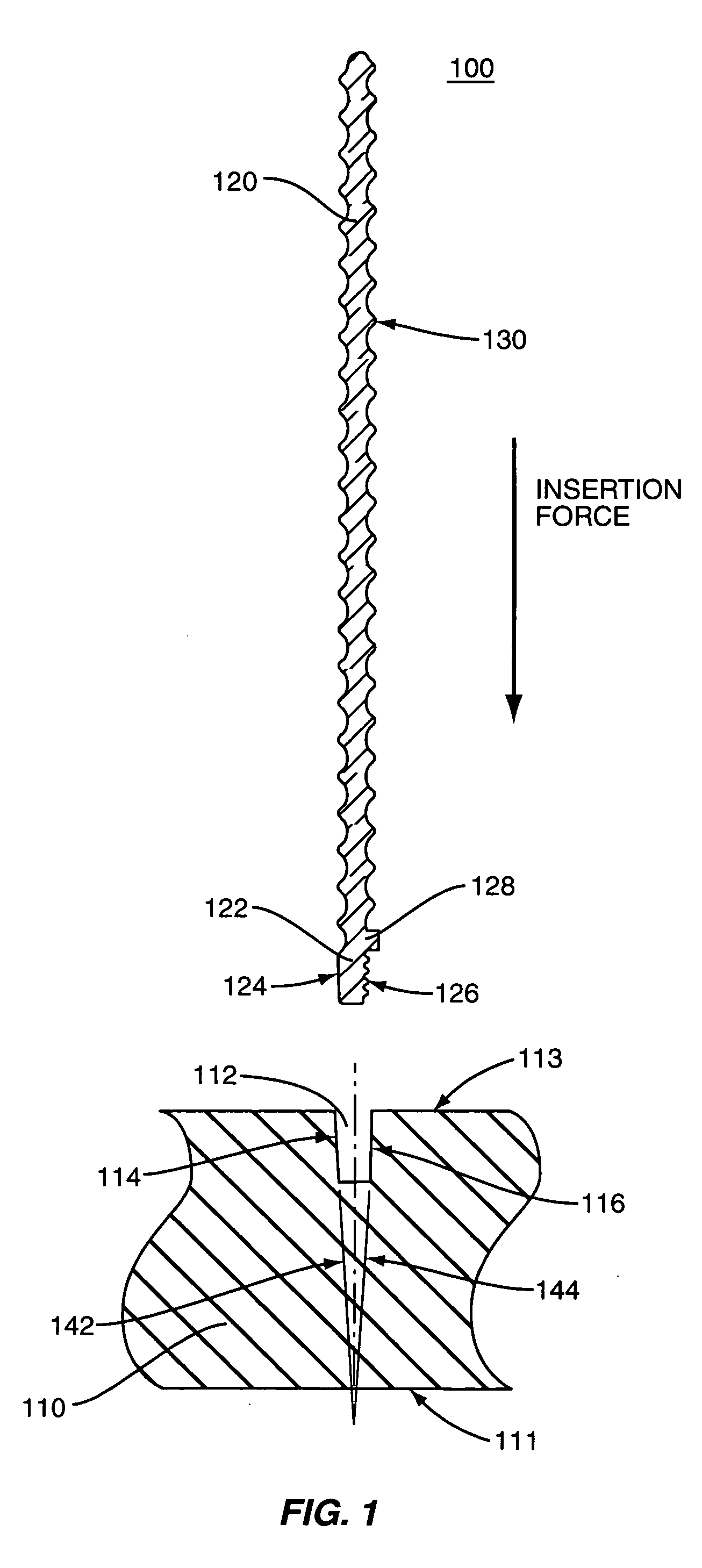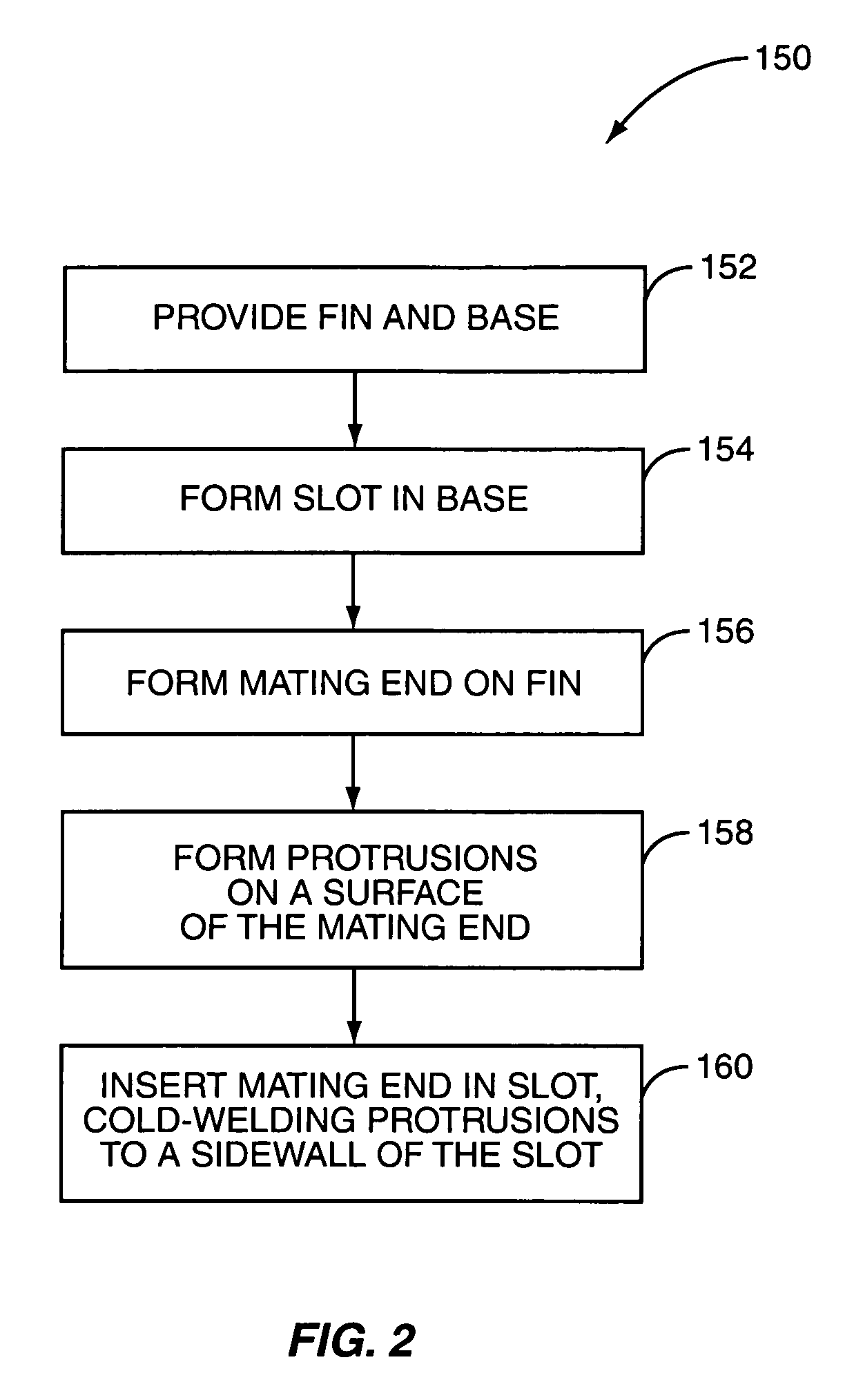Heat sink
a heat sink and heat sink technology, applied in the direction of electrical equipment construction details, lighting and heating apparatus, laminated elements, etc., can solve the problems of limited practical fin height, limited overall thermal performance of one-piece extruded heat sinks of this type, and limited practical manufacturing considerations. , to achieve the effect of high thermal and mechanical performance and low manufacturing cos
- Summary
- Abstract
- Description
- Claims
- Application Information
AI Technical Summary
Benefits of technology
Problems solved by technology
Method used
Image
Examples
Embodiment Construction
[0029]FIG. 1 illustrates in a partial cross-sectional view components comprising one embodiment of a low-cost, high thermal performance convection heat sink assembly as taught herein. The heat sink assembly 100 comprises the base 110 and the fin 120. The base 110 and the fin 120 can comprise any material having suitable thermal conductivity such as aluminum, copper, silver, or any suitable alloy or combination thereof. Preferably, the base 110 and the fin 120 comprise an aluminum alloy such as AlMgSiO5, and may be advantageously formed using an extrusion process.
[0030] The base 110 is configured to dissipate heat from an electronic component (not shown) when the electronic component is in contact with the lower surface 111 of the base. The fin 120 is configured to dissipate heat from the base 110 when the fin is inserted into the base. The base 110 includes a slot 112 formed therein for receiving the fin 120. The slot 112 extends upward toward an upper surface 113 of the base 110 a...
PUM
 Login to View More
Login to View More Abstract
Description
Claims
Application Information
 Login to View More
Login to View More - R&D
- Intellectual Property
- Life Sciences
- Materials
- Tech Scout
- Unparalleled Data Quality
- Higher Quality Content
- 60% Fewer Hallucinations
Browse by: Latest US Patents, China's latest patents, Technical Efficacy Thesaurus, Application Domain, Technology Topic, Popular Technical Reports.
© 2025 PatSnap. All rights reserved.Legal|Privacy policy|Modern Slavery Act Transparency Statement|Sitemap|About US| Contact US: help@patsnap.com



